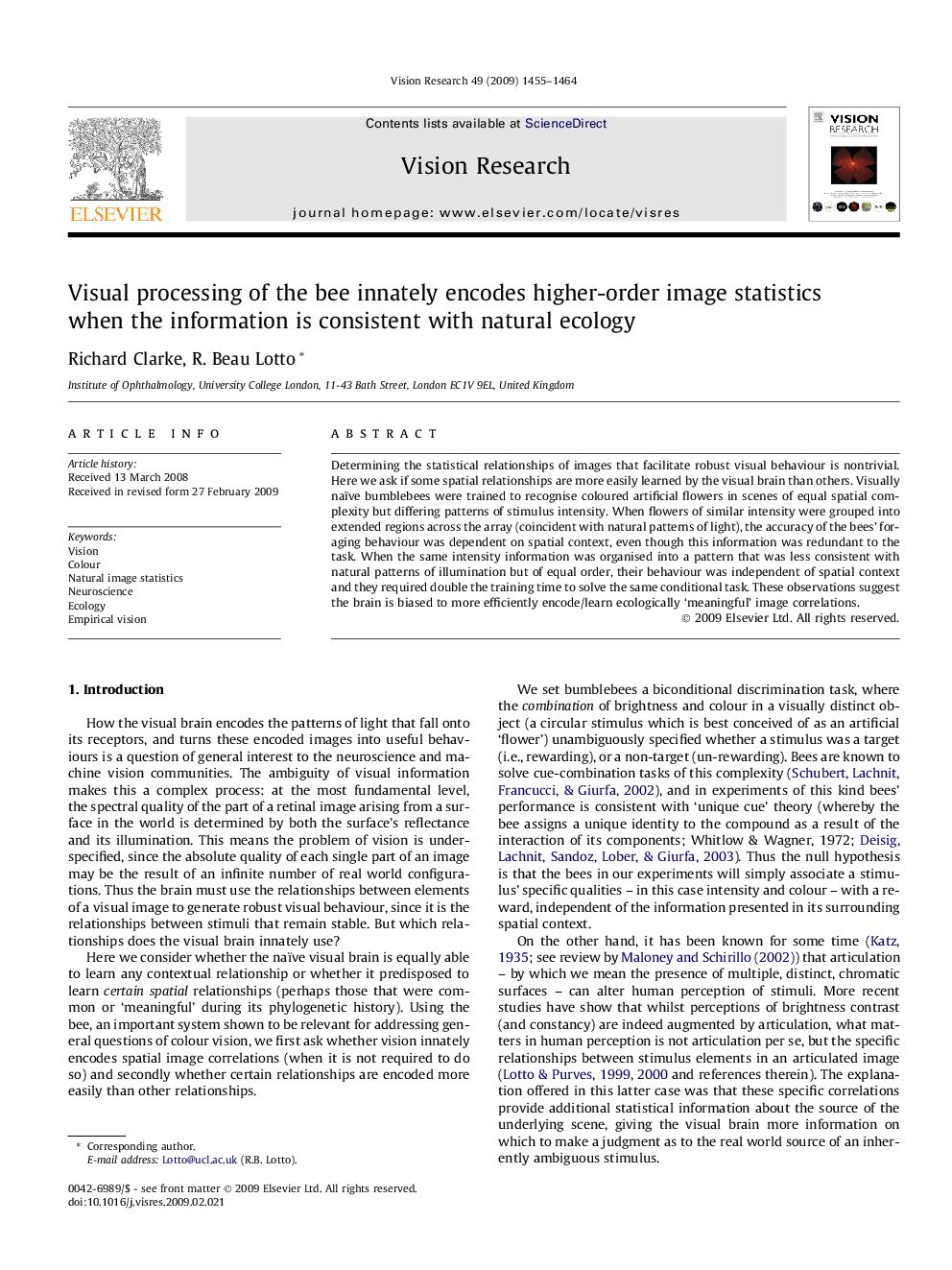| Article ID | Journal | Published Year | Pages | File Type |
|---|---|---|---|---|
| 4035354 | Vision Research | 2009 | 10 Pages |
Determining the statistical relationships of images that facilitate robust visual behaviour is nontrivial. Here we ask if some spatial relationships are more easily learned by the visual brain than others. Visually naïve bumblebees were trained to recognise coloured artificial flowers in scenes of equal spatial complexity but differing patterns of stimulus intensity. When flowers of similar intensity were grouped into extended regions across the array (coincident with natural patterns of light), the accuracy of the bees’ foraging behaviour was dependent on spatial context, even though this information was redundant to the task. When the same intensity information was organised into a pattern that was less consistent with natural patterns of illumination but of equal order, their behaviour was independent of spatial context and they required double the training time to solve the same conditional task. These observations suggest the brain is biased to more efficiently encode/learn ecologically ‘meaningful’ image correlations.
